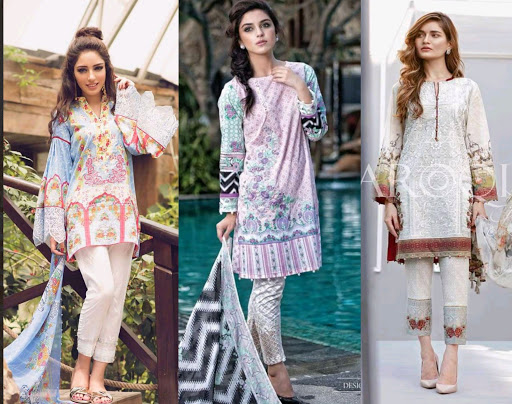Working from Home Fashion Trends
As indicated by design researcher Susan Kaiser, everybody is compelled to show up, that is, there is no unmediated method of being before others. If we need it, everybody showing up before another is assessed according to dress, how they show up. This most regularly implies what one looks like, what tones, materials and outline one wears on the body. Regardless of whether the articles of clothing are no different either way, they will seem unique; if the thing is washed, collapsed, repaired, or new.
Design is a term that is tormented by its various uses, and by the indistinct use of the idea. For instance, the term means contrast, yet in addition equivalence. It connotes the most recent differentiation, just as the arrival of the old. While it very well might be characterized by a separate and regarded tasteful world class, who make a look select, this look is regularly utilizing references from those prohibited from making the differentiation.
Though a pattern frequently indicates an exceptional stylish articulation and regularly enduring more limited than a season, design is a particular and industry-upheld articulation generally attached to the style season and assortments. Style is an articulation that keeps going over numerous seasons and is regularly associated with social developments and social markers, images, class, and culture (ex. Extravagant, Rococo, and so forth) As per social scientist Pierre Bourdieu, design implies "the most recent contrast."
Despite the fact that the terms are regularly utilized together, style varies from apparel and ensembles — "attire" depicts the material and specialized article of clothing; "outfit" has come to mean extravagant dress or disguise wear. "Style," on the other hand, depicts the social and fleeting framework that "actuates" dress as a social signifier in a specific time and setting. Logician Giorgio Agamben interfaces style to the current power of the subjective second, to the worldly angle the Greek called kairos, though dress has a place with the quantitative, what the Greek called Chronos.
While some selective brands may guarantee the name high fashion, the term is in fact restricted to individuals from the Chambre Syndicale de la Haute Couture in Paris. High fashion is more optimistic; roused by workmanship and culture, and much of the time, saved to the monetary first class.
Design is additionally a wellspring of craftsmanship, permitting individuals to show their own extraordinary taste and styling. Various architects are affected by outside improvements and mirror this motivation in their works. For instance, Gucci's 'smudged green' pants may seem as though a grass smudge, yet to numerous others they show virtue, newness and summer.
Design is a search for a specific time and spot. From this definition, design is the thing that individuals wear in a particular setting. On the off chance that an outsider would show up in this setting, enhancing something other than what's expected, the outsider would be considered "outdated."
Early Western voyagers, going to India, Persia, Turkey, or China, would much of the time comment on the shortfall of progress in design in those nations. The Japanese shōgun's secretary gloated (not totally precisely) to a Spanish guest in 1609 that Japanese dress had not changed in over 1,000 years. In any case, there is significant proof in Ming China of quickly changing designs in Chinese apparel. Changes in outfit regularly occurred now and again of financial or social change, as happened in antiquated Rome and the middle age Caliphate, trailed by an extensive stretch without huge changes. In eighth century Moorish Spain, the artist Ziryab acquainted with Córdoba questionable source complex dress styles dependent on occasional and day by day designs from his local Baghdad, changed by his motivation. Comparable changes in design happened in the eleventh century in the Middle East after the appearance of the Turks, who presented apparel styles from Central Asia and the Far East.
Furthermore, there is a long history of design in West Africa. The Cloth was utilized as a type of money in exchange with the Portuguese and Dutch as ahead of schedule as the sixteenth Century. Privately delivered fabric and less expensive European imports were gathered into new styles to oblige the developing exclusive class of West Africans and inhabitant gold and slave brokers. There was an astoundingly solid custom of fabric weaving in Oyo and the zones occupied by the Igbo public.
Style in Europe and the Western side of the equator
As indicated by researchers, a particular meaning of style arises with the ascent of private enterprise and more liberal social orders in Europe during late bygone eras. The start in Europe of ceaseless and progressively fast change in garments styles can be decently dependably dated. Students of history, including James Laver and Fernand Braudel, date the beginning of Western style in attire to the center of the fourteenth century, however they will in general depend vigorously on contemporary symbolism and enlightened compositions were not basic before the fourteenth century. The most sensational early change in design was an abrupt intense shortening and fixing of the male over-piece of clothing from calf-length to scarcely covering the posterior, once in a while went with stuffing in the chest to make it look greater. This made the unmistakable Western blueprint of a custom fitted top worn over stockings or pants.
The speed of progress sped up extensively in the next century, and ladies' and men's style, particularly in the dressing and decorating of the hair, turned out to be similarly intricate. Craftsmanship students of history are, consequently, ready to utilize style with certainty and accuracy to date pictures, frequently to inside five years, especially on account of pictures from the fifteenth century. At first, changes in design prompted a fracture across the high societies of Europe of what had recently been a very much like way of dressing and the resulting advancement of particular public styles. These public styles stayed altogether different until a counter-development in the seventeenth to eighteenth hundreds of years forced comparable styles indeed, for the most part starting from Ancien Régime France. Despite the fact that the rich normally drove design, the expanding fortune of early present day Europe prompted the bourgeoisie and even workers following patterns a ways off, yet at the same time awkwardly close for the elites a factor that Fernand Braudel sees as one of the fundamental engines of evolving style.
In the sixteenth century, public contrasts were at their generally articulated. Ten sixteenth century representations of German or Italian noble men may show ten altogether various caps. Albrecht Dürer represented the distinctions in his real (or composite) differentiation of Nuremberg and Venetian styles at the end of the fifteenth century (representation, right). The "Spanish style" of the late sixteenth century started the move back to synchronicity among privileged Europeans, and after a battle during the seventeenth century, French styles definitively took over administration, a cycle finished in the eighteenth century.
Despite the fact that distinctive material tones and examples changed from one year to another, the cut of a refined man's jacket and the length of his petticoat, or the example to which a woman's dress was cut, changed all the more gradually. Men's designs were basically gotten from military models, and changes in an European male outline were excited in venues of European conflict where refined man officials had freedoms to make notes of various styles like the "Steinkirk" cravat or bowtie.
Despite the fact that there had been circulation of dressed dolls from France since the sixteenth century and Abraham Bosse had created inscriptions of design during the 1620s, the speed of switch got during the 1780s with expanded distribution of French etchings representing the most recent Paris styles. By 1800, all Western Europeans were dressing the same (or thought they were); neighborhood variety turned out to be initial an indication of common culture and later an identification of the moderate laborer.
In spite of the fact that tailors and dressmakers were no uncertainty answerable for some advancements, and the material business in fact drove numerous patterns, the historical backdrop of style configuration is for the most part perceived to date from 1858 when the English-conceived Charles Frederick Worth opened the main bona fide high fashion house in Paris. The Haute house was the name set up by the public authority for the design houses that satisfied the guidelines of the business. These style houses need to stick to principles, for example, keeping in any event twenty representatives occupied with making the garments, showing two assortments each year at design shows, and introducing a specific number of examples to costumers. From that point forward, the possibility of the style planner as a big name in their own privilege has gotten progressively prevailing.
The four significant current style capitals are recognized to be Paris, Milan, New York City, and London, which are all base camp to the main design organizations and are prestigious for their significant impact on worldwide design. Style weeks are held in these urban communities, where creators display their new apparel assortments to crowds. A progression of significant originators, for example, Coco Chanel and Yves Saint-Laurent have kept Paris as the middle most watched by the remainder of the world, in spite of the fact that high fashion is currently financed by the offer of prepared to-wear assortments and scent utilizing a similar marking.
Current Westerners have an immense number of decisions in choice of their garments. What an individual decides to wear can mirror their character or interests. At the point when individuals who have high social status begin to wear new or various styles, they may rouse another design pattern. Individuals who like or regard these individuals are affected by their style and start wearing comparatively styled garments. Styles may change extensively inside a general public as per age, social class, age, occupation, and geology, and may likewise differ over the long run. The terms fashionista and design casualty allude to somebody who thoughtlessly follows current styles. In the mid 2000s, Asian design has gotten progressively critical in neighborhood and worldwide business sectors.




0 Comments